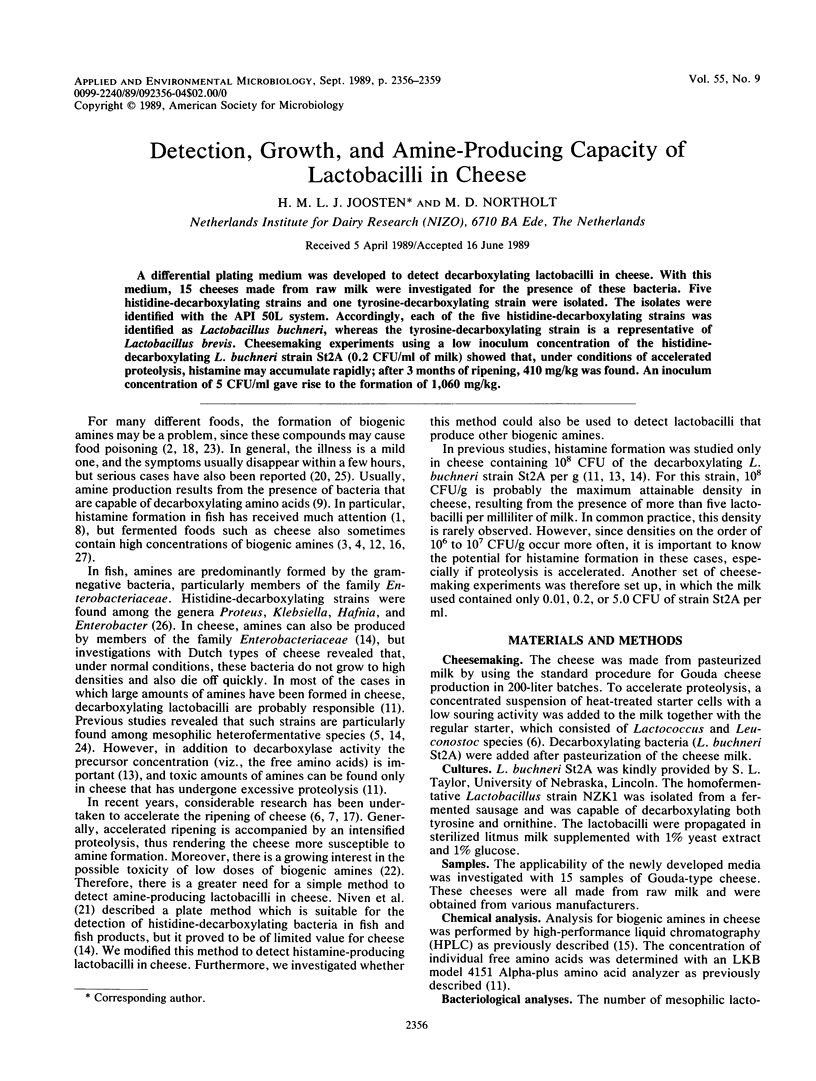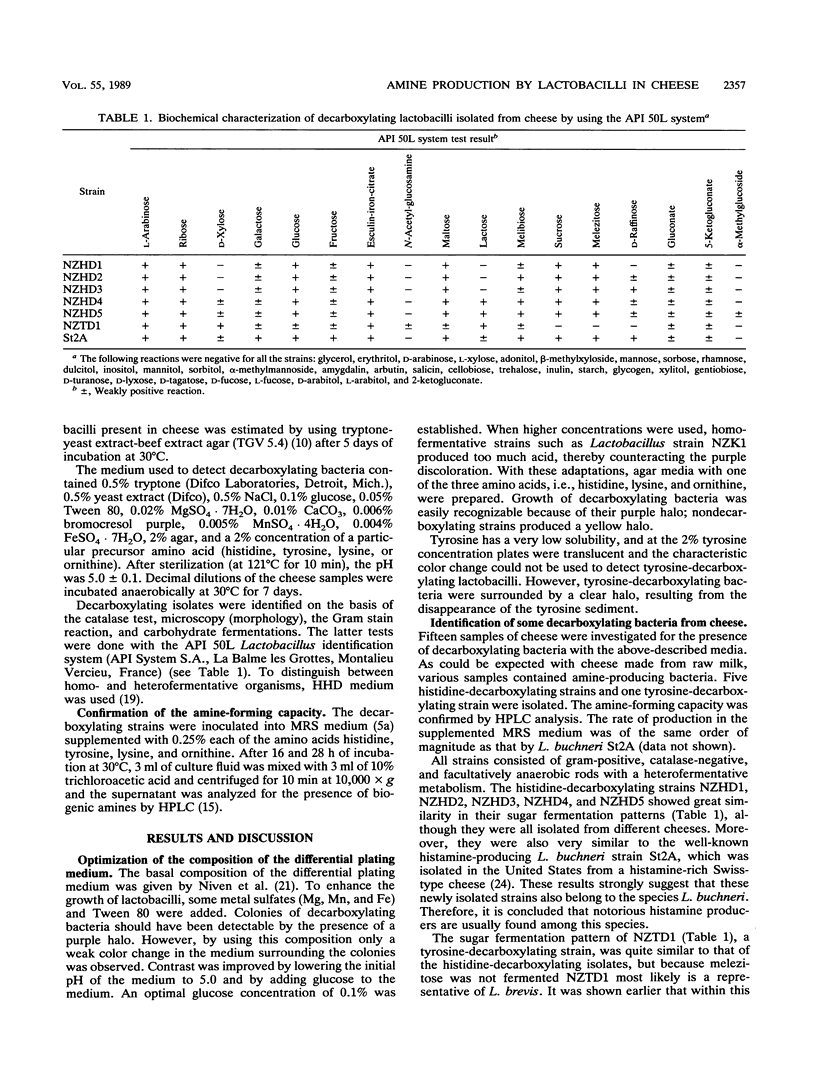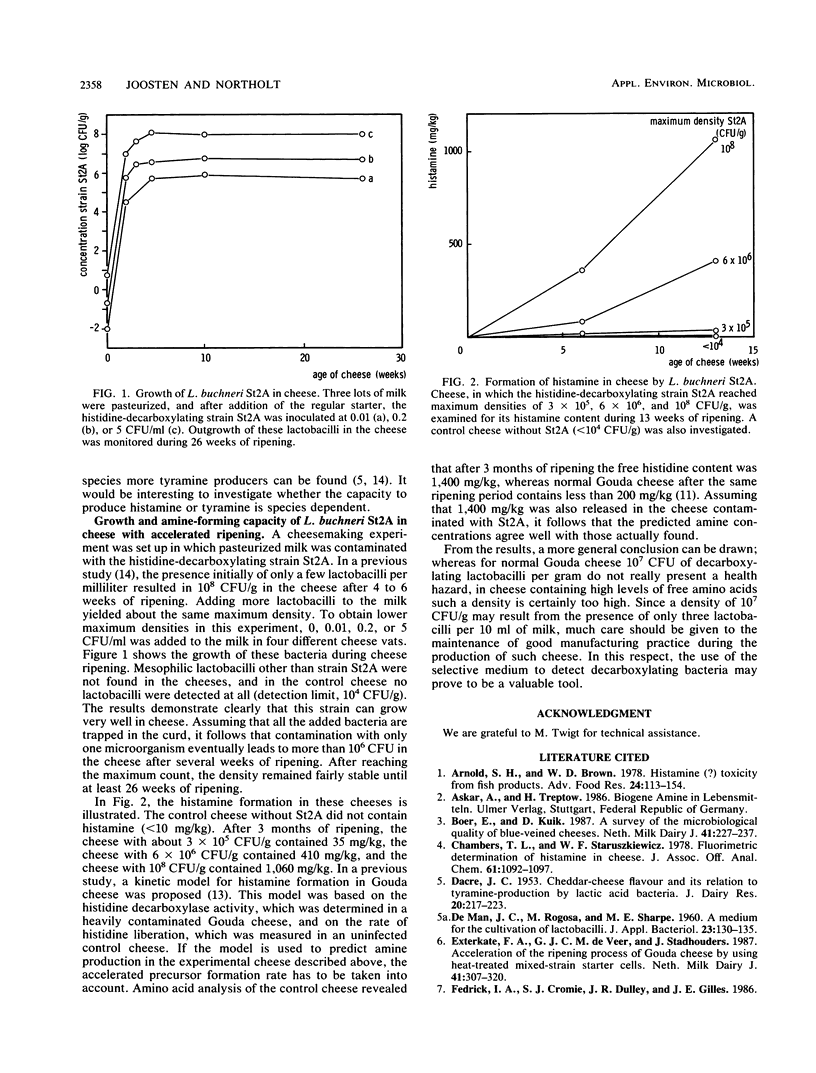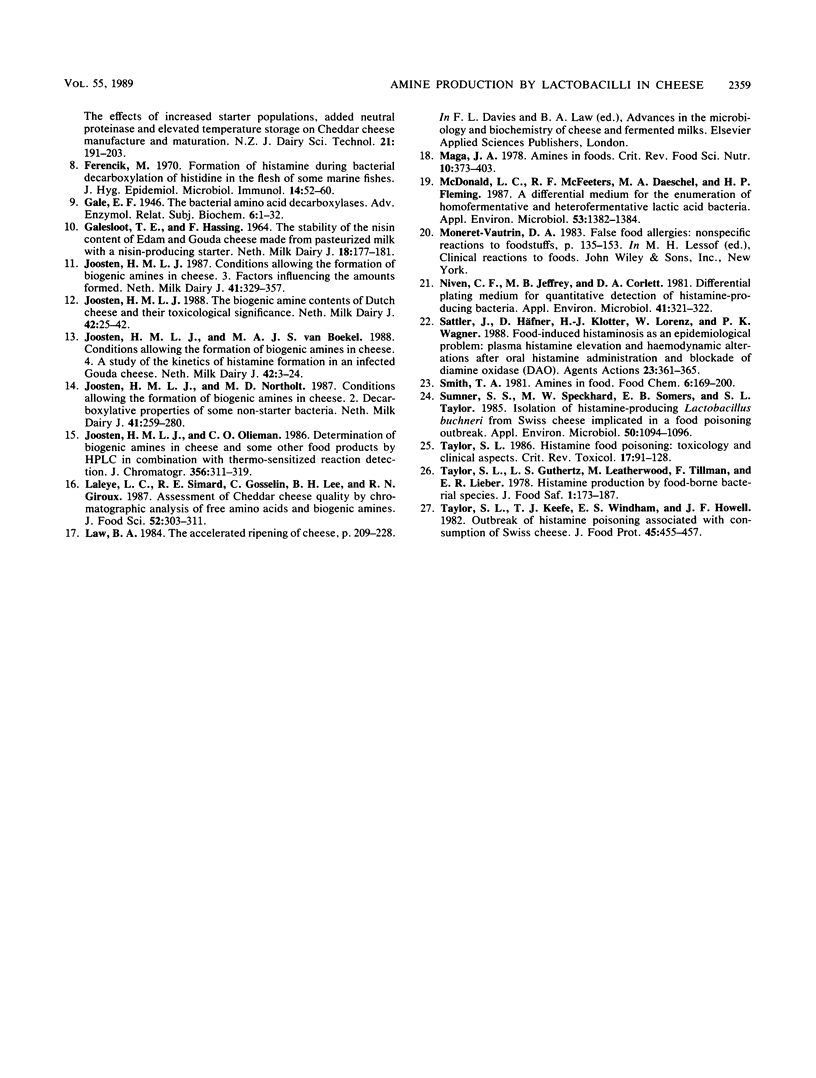Abstract
A differential plating medium was developed to detect decarboxylating lactobacilli in cheese. With this medium, 15 cheeses made from raw milk were investigated for the presence of these bacteria. Five histidine-decarboxylating strains and one tyrosine-decarboxylating strain were isolated. The isolates were identified with the API 50L system. Accordingly, each of the five histidine-decarboxylating strains was identified as Lactobacillus buchneri, whereas the tyrosine-decarboxylating strain is a representative of Lactobacillus brevis. Cheesemaking experiments using a low inoculum concentration of the histidinedecarboxylating L. buchneri strain St2A (0.2 CFU/ml of milk) showed that, under conditions of accelerated proteolysis, histamine may accumulate rapidly; after 3 months of ripening, 410 mg/kg was found. An inoculum concentration of 5 CFU/ml gave rise to the formation of 1,060 mg/kg.
Full text
PDF



Selected References
These references are in PubMed. This may not be the complete list of references from this article.
- Arnold S. H., Brown W. D. Histamine (?) toxicity from fish products. Adv Food Res. 1978;24:113–154. doi: 10.1016/s0065-2628(08)60157-3. [DOI] [PubMed] [Google Scholar]
- Chambers T. L., Staruszkiewicz W. F., Jr Fluorometric determination of histamine in cheese. J Assoc Off Anal Chem. 1978 Sep;61(5):1092–1097. [PubMed] [Google Scholar]
- Ferencík M. Formation of histamine during bacterial decarboxylation of histidine in the flesh of some marine fishes. J Hyg Epidemiol Microbiol Immunol. 1970;14(1):52–60. [PubMed] [Google Scholar]
- Joosten H. M., Olieman C. Determination of biogenic amines in cheese and some other food products by high-performance liquid chromatography in combination with thermo-sensitized reaction detection. J Chromatogr. 1986 Apr 4;356(2):311–319. doi: 10.1016/s0021-9673(00)91491-2. [DOI] [PubMed] [Google Scholar]
- Maga J. A. Amines in foods. CRC Crit Rev Food Sci Nutr. 1978;10(4):373–403. doi: 10.1080/10408397809527256. [DOI] [PubMed] [Google Scholar]
- McDonald L. C., McFeeters R. F., Daeschel M. A., Fleming H. P. A differential medium for the enumeration of homofermentative and heterofermentative lactic Acid bacteria. Appl Environ Microbiol. 1987 Jun;53(6):1382–1384. doi: 10.1128/aem.53.6.1382-1384.1987. [DOI] [PMC free article] [PubMed] [Google Scholar]
- Niven C. F., Jr, Jeffrey M. B., Corlett D. A., Jr Differential plating medium for quantitative detection of histamine-producing bacteria. Appl Environ Microbiol. 1981 Jan;41(1):321–322. doi: 10.1128/aem.41.1.321-322.1981. [DOI] [PMC free article] [PubMed] [Google Scholar]
- Sattler J., Häfner D., Klotter H. J., Lorenz W., Wagner P. K. Food-induced histaminosis as an epidemiological problem: plasma histamine elevation and haemodynamic alterations after oral histamine administration and blockade of diamine oxidase (DAO). Agents Actions. 1988 Apr;23(3-4):361–365. doi: 10.1007/BF02142588. [DOI] [PubMed] [Google Scholar]
- Sumner S. S., Speckhard M. W., Somers E. B., Taylor S. L. Isolation of histamine-producing Lactobacillus buchneri from Swiss cheese implicated in a food poisoning outbreak. Appl Environ Microbiol. 1985 Oct;50(4):1094–1096. doi: 10.1128/aem.50.4.1094-1096.1985. [DOI] [PMC free article] [PubMed] [Google Scholar]
- Taylor S. L. Histamine food poisoning: toxicology and clinical aspects. Crit Rev Toxicol. 1986;17(2):91–128. doi: 10.3109/10408448609023767. [DOI] [PubMed] [Google Scholar]


